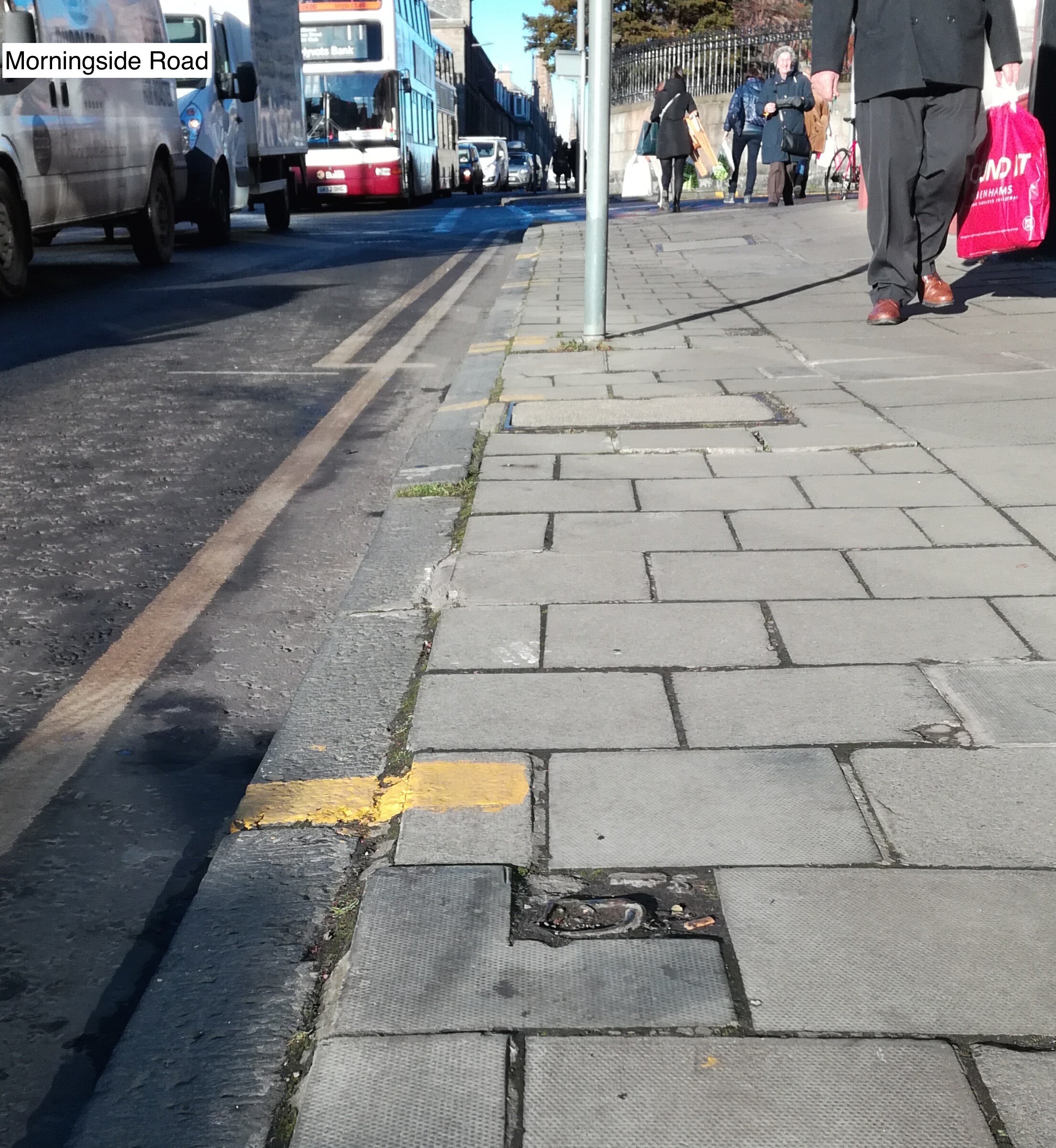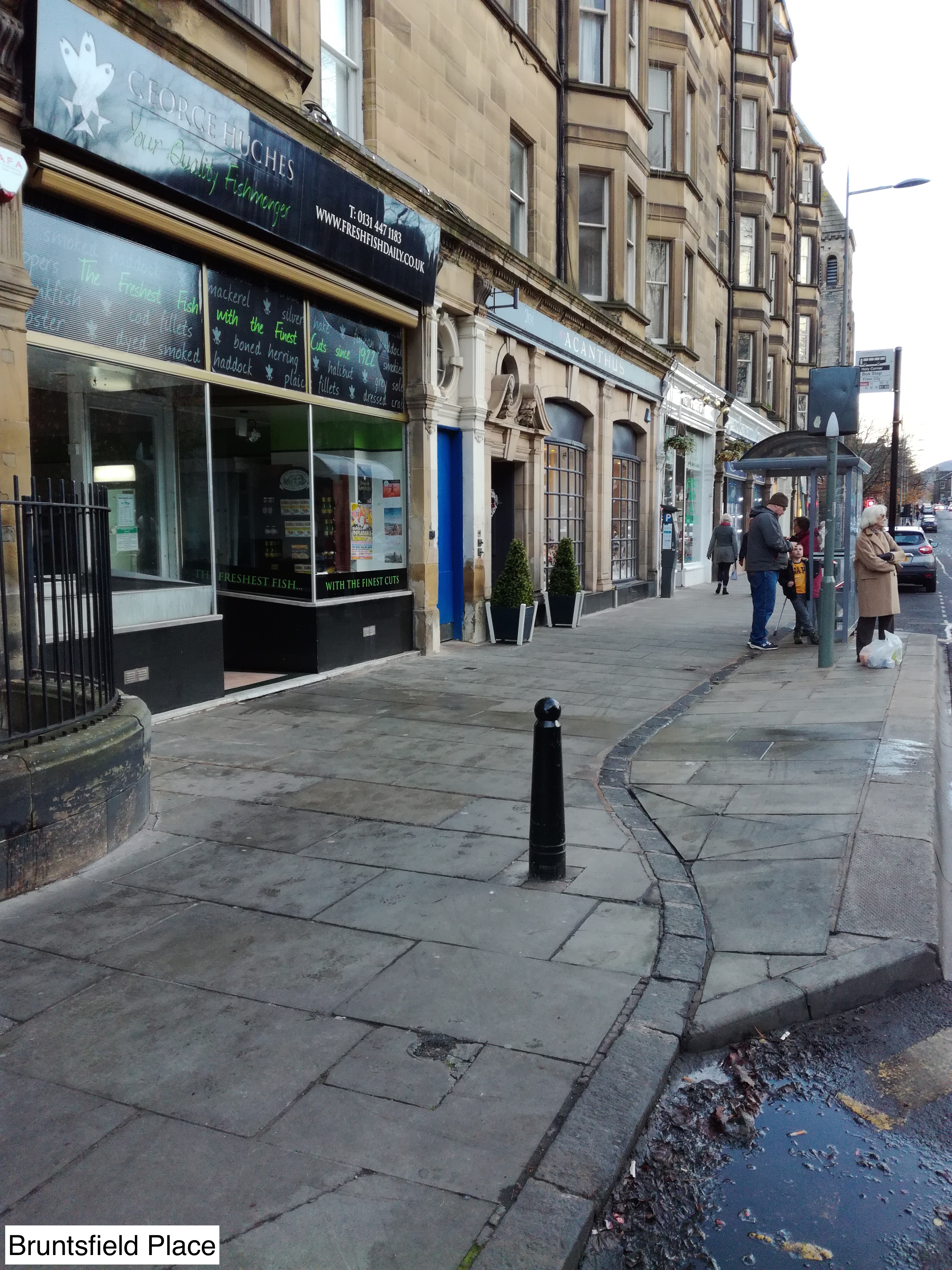|
Good streets are not just about strategic ‘place-making’; we also need to give more attention to improving mundane operational practice in street maintenance to make them work better for people. The devil is often in the detail; here are some examples from Edinburgh of poor practice that is all too common in day-to-day street design and maintenance. Of course, these kind of things in themselves have only a small adverse impact on streets, but multiplied hundreds and thousands of times, they make walking less attractive and safe. Putting this right is an opportunity to make streets better bit by bit - and at little or not cost. There is a role here for quality management processes and professional bodies like IHT, but most of all we need to develop a culture that places a higher value on good streets and a quality public realm. This bin store for flats has its very own tactile paving: someone has thought “dropped kerb, so we need tactile paving”. This signals to a blind person that this is a safe place to cross the road. Of course there is no crossing here - the tactile paving leads to a row of parked cars on the other side of the street. While I welcome the removal of redundant signage poles on pavements (better of course, don’t install them in the first place), where they are removed, this should be done properly. This means no remnant stumps, and pavement surfaces should be fully re-instated. On a recent visit to Glasgow, a ‘Walkable Communities’ participant from the continent commented on an example: “How do they get away with this??” Bollards are generally used to deter pavement parking, and in many places, may be the lesser of two evils in performing this function. So it is regrettable to see the common sight of bollards adjacent to other street furniture (often signage poles)…assuming the pole is was put in after the bollard, the bollard could (should) have been removed. And I understand that the mail box to the left is also redundant (thanks to @Paul) Here is another bollard issue - the pavement here (Bruntsfield, Edinburgh) was recently repaired to a good standard having been in poor condition. The work stopped just short of an obsolete bollard which was on an old kerb line. Since the bus boarder was installed some years ago, the bollard has been a redundant relic, pretty much in the pedestrian desire line. Why wasn’t it removed when the paving was re-laid?
0 Comments
|
“I hate the way everyone responsible for urban life seems to have lost sight of what cities are for. They are for people” Bill Bryson, Neither here Nor there, 1991 p61 Archives
November 2022
Categories |
|
|




 RSS Feed
RSS Feed
